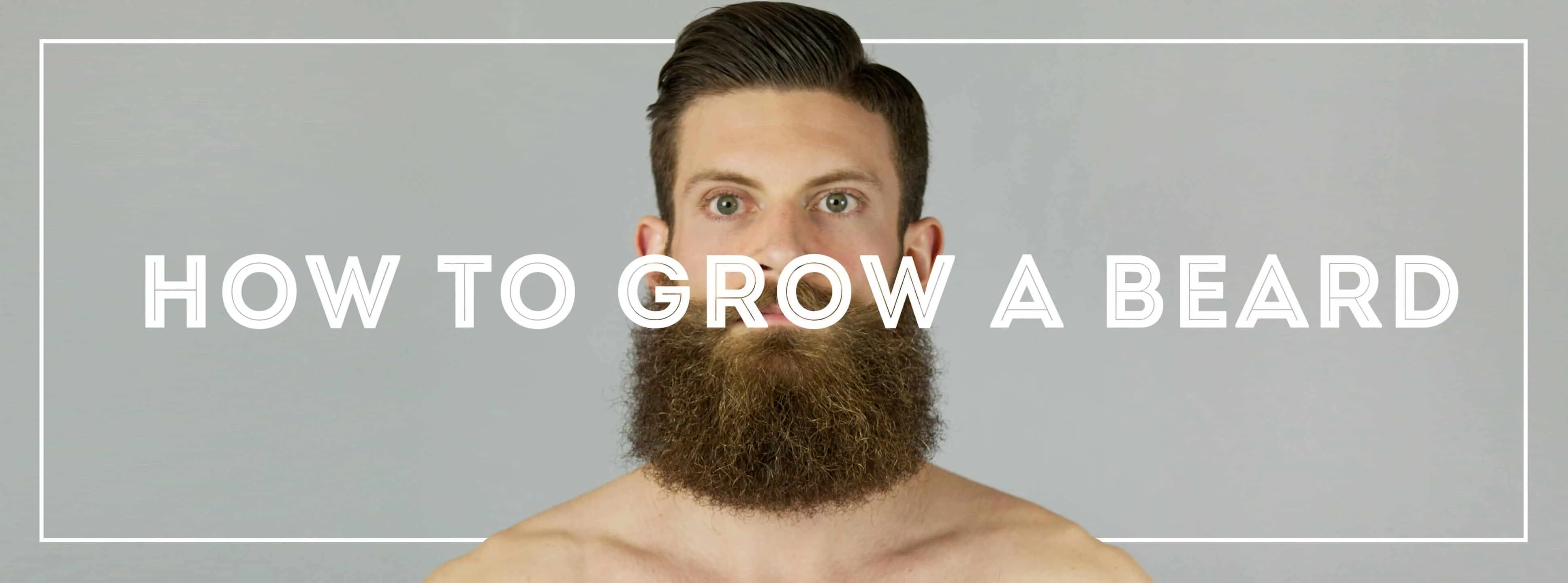Ever experienced the dreaded beard itch? It’s that irritating, scratchy feeling that can make growing a beard for the first time quite uncomfortable. But fear not, because at BeardsDude.com, we’ve got your back (or rather, your beard) covered. In our upcoming article, we’ll dive deep into the causes behind beard itch and provide you with practical tips and tricks to alleviate the discomfort.
From exploring the role of dry skin and ingrown hairs, to recommending specific beard care products and techniques, we’ll give you all the information you need to keep that itch at bay. We understand that beard growth is a journey, and along the way, you’re bound to encounter challenges. But with our expert guidance, you’ll be able to navigate through the itchy phase and ultimately enjoy the full glory of your beard.
So stay tuned, fellow beard enthusiasts! BeardsDude.com is your go-to resource for all things beard-related. We’re here to support you, educate you, and ensure that your beard journey is as smooth (pun intended) and enjoyable as possible. Get ready to bid farewell to the itch and say hello to a beard that’s not only formidable but also ridiculously good-looking. Congratulations on starting your beard journey! Growing a beard can be an exciting and transformative experience, but it’s not without its challenges. One of the most common issues faced by many men when growing a beard for the first time is beard itch. Don’t worry, though, because we’ve got you covered with some tips and tricks to help alleviate that annoying itch.

Causes of Beard Itch
Before we dive into the solutions, let’s understand why beard itch occurs in the first place. There are a few common causes:
Dry Skin
Dry skin is a leading cause of beard itch. When you start growing a beard, the natural oils produced by your skin may not be able to reach the newly formed hair follicles, leading to dryness and itchiness.
Folliculitis
Folliculitis is a condition where hair follicles become inflamed, usually due to bacterial or fungal infections. Beard follicles can also be affected by this condition, leading to itchiness, redness, and small bumps.
Ingrown Hairs
As your beard grows, some hairs may curl back into the skin instead of growing out, causing ingrown hairs. These can be painful and itchy, especially when they become infected.
Now that we know the causes, let’s explore some tips for relieving beard itch.
Tips for Relieving Beard Itch
Keep the Skin Clean
Maintaining a clean beard is crucial for preventing itchiness. Regularly washing your beard with a gentle, beard-specific shampoo or cleanser helps remove dirt, dead skin cells, and excess oil that can contribute to itchiness.
Moisturize Regularly
Moisturizing your beard and the skin beneath it is essential to combat dryness and itchiness. Look for a moisturizer or beard oil that contains natural ingredients like jojoba oil or argan oil, as these help nourish the skin and hair follicles.
Use a Beard Oil or Balm
Beard oils and balms are specifically formulated to hydrate and condition your beard, making it softer and more manageable. They also help to alleviate itchiness by providing the necessary moisture and nutrients to your skin and hair.
Now that we’ve discussed how to relieve beard itch, let’s understand the different products and their benefits.

Understanding Beard Products
Choosing the Right Beard Oil
Beard oil is a must-have product for any beardsman. It not only helps to moisturize and soften your beard but also provides a refreshing aroma. When choosing a beard oil, look for natural ingredients like jojoba oil, argan oil, and vitamin E, as they promote healthy beard growth and reduce itchiness.
Benefits of Beard Balm
Beard balm is a thicker, more sculptable product that helps to shape and style your beard while providing the same moisturizing benefits as beard oil. It contains beeswax or shea butter, which gives it a more solid consistency. Beard balm is particularly useful for taming unruly facial hair and preventing beardruff.
Applying Beard Products Correctly
To get the most out of your beard products, it’s essential to apply them correctly. When applying beard oil, start with a small amount and work it into your hands. Then, massage it into your beard and the skin beneath, making sure to reach the roots of your facial hair. For beard balm, use a fingertip-sized amount and rub it between your palms before applying it evenly throughout your beard.
Now that we know about beard products, let’s explore some common mistakes to avoid.
Avoiding Common Mistakes
Over-Washing the Beard
While it’s important to keep your beard clean, over-washing can strip away the natural oils and exacerbate dryness and itchiness. Aim to wash your beard no more than two to three times a week.
Using Harsh Shampoos or Soaps
Using regular shampoos or soaps on your beard can be too harsh, as they often contain chemicals that can dry out your skin and hair. Opt for a mild, beard-specific cleanser that is gentle on your beard and skin.
Scratching or Picking at the Beard
Resist the urge to scratch or pick at your beard, as this can lead to further irritation and potentially damage the hair follicles. Instead, gently massage your beard to alleviate itchiness.
Now that we’ve covered common mistakes, let’s talk about the importance of proper grooming.

Importance of Proper Grooming
Regular Trimming
Regularly trimming your beard helps to prevent split ends, reduces tangles, and promotes healthy growth. Trim your beard in the direction it naturally grows and invest in a quality beard trimmer or scissors for precise results.
Brushing and Combing
Brushing and combing your beard help distribute natural oils, remove tangles, and stimulate blood flow to the hair follicles. Invest in a good-quality beard brush or comb and gently brush your beard in the direction of hair growth to avoid unnecessary pulling or breakage.
Avoiding Heat Styling Tools
Excessive use of heat styling tools like hairdryers, curling irons, or straighteners can damage your beard and contribute to dryness and itchiness. If you must use these tools, use them sparingly and on a low heat setting.
Now that we’ve covered grooming, let’s address another common issue – patchy growth.
Dealing with Patchy Growth
Patience and Acceptance
Patchy growth is a common concern for many men, especially in the early stages of beard growth. Patience is key, as it can take several weeks or even months for your beard to fill in completely. Embrace your beard’s unique growth pattern and give it time to reach its full potential.
Using Beard Fillers
If you’re concerned about patchiness, you can consider using beard fillers. These are products specifically designed to provide temporary coverage for thin spots or gaps in your beard. Beard fillers come in various forms, such as powders, sprays, and creams.
Trying Different Styles
If certain areas of your beard are sparser than others, experimenting with different beard styles can help minimize the appearance of patchiness. For example, a shorter beard style like a goatee or stubble may provide a more balanced look.
Now that we’ve tackled patchy growth, let’s discuss how to prevent beard dandruff.

Preventing Beard Dandruff
Keeping the Beard Clean
Good hygiene is crucial for preventing beard dandruff. Regularly cleanse your beard with a beard shampoo or cleanser and gently exfoliate your skin to remove dead skin cells and prevent buildup.
Using Anti-Dandruff Products
If you’re prone to dandruff, consider using an anti-dandruff shampoo specifically formulated for the beard. Look for ingredients like tea tree oil or ketoconazole, as they have antifungal and antimicrobial properties that help control dandruff.
Exfoliating the Skin
Exfoliating your skin helps remove dead skin cells, unclog pores, and promote healthier hair growth. Use a gentle exfoliating scrub or brush once or twice a week to keep your skin clean and prevent dandruff.
Now that we’ve covered beard dandruff, let’s explore the different stages of beard growth.
Understanding Beard Growth
The Stages of Beard Growth
Beard growth occurs in different stages, and it’s helpful to understand them to manage your expectations. The stages include:
-
The Anagen phase: This is the active growth phase, where individual hairs grow continuously.
-
The Catagen phase: In this transitional phase, the hair follicles start to shrink, and the growth rate decreases.
-
The Telogen phase: This is the resting phase, where the hair follicles are dormant. During this phase, old hairs fall out and new ones begin to grow.
Understanding these stages can help you better understand your beard’s growth pattern and adjust your grooming routine accordingly.
Factors Affecting Beard Growth
Several factors can influence the rate and quality of your beard growth. These include genetics, hormonal levels, age, overall health, and lifestyle choices. While you may not have control over genetics, adopting a healthy lifestyle, including a balanced diet and regular exercise, can positively impact your beard growth.
Enhancing Beard Growth Naturally
While there are no guaranteed ways to increase beard growth, certain natural remedies and lifestyle changes can help support and enhance the growth process. These include:
- Eating a nutrient-rich diet that includes protein, vitamins, and minerals essential for hair growth.
- Staying properly hydrated by drinking enough water throughout the day.
- Managing stress levels, as chronic stress can disrupt hormonal balance and affect beard growth.
Now that we understand beard growth, let’s explore the role of diet and lifestyle in beard care.

The Role of Diet and Lifestyle
Eating Nutrient-Rich Foods
A healthy and balanced diet plays a crucial role in promoting beard growth and overall hair health. Foods rich in protein, vitamins (particularly B vitamins), and minerals like zinc and iron support the production of keratin, the protein that makes up your hair.
Hydrating Properly
Proper hydration is essential for beard health and growth. Drink an adequate amount of water each day to keep your body and hair cells hydrated. Dehydration can lead to dry, brittle hair and contribute to itching and other beard-related issues.
Managing Stress
Chronic stress can disrupt hormonal balance and negatively affect your beard growth. Engaging in stress-management techniques like exercise, meditation, and hobbies can help create a more relaxed environment for beard growth.
Now that we’ve covered diet and lifestyle, let’s discuss some beard care tips for different beard styles.
Beard Care Tips for Different Beard Styles
Short Stubble
For short stubble, regular trimming and gentle exfoliation are crucial. Use a beard trimmer at the desired length and maintain a regular grooming routine to prevent the stubble from becoming unruly or itchy.
Full Beard
A full beard requires more maintenance to keep it neat and healthy. Regular trimming, beard oil or balm, and brushing are essential to prevent tangles, dryness, and itchiness. Experiment with different beard products to find the ones that work best for your full beard.
Moustache Styles
If you’re sporting a moustache, pay extra attention to moisturizing and trimming. Use a moustache wax or balm to keep your moustache styled and in place. Regularly trim any stray hairs to maintain a clean and polished look.
Now that we’ve covered different beard styles, let’s explore beard care during different seasons.
Beard Care during Different Seasons
Summer
In the summer, it’s important to protect your beard and skin from the sun’s harmful UV rays. Apply a beard-specific sunscreen or wear a hat to prevent sunburn and dryness. Moisturize regularly, and consider using lighter products like beard oil instead of heavy balms.
Winter
Cold weather can dry out your beard and skin, leading to itchiness and flakiness. Use a thicker beard balm or oil to provide extra moisture and protection. Avoid excessively hot showers, as they can strip away natural oils.
Transitioning Between Seasons
During the transitional seasons, adjust your beard care routine accordingly. Gradually switch to lighter or heavier products depending on the changing weather conditions to ensure your beard stays healthy and itch-free.
Now that we’ve covered seasonal care, let’s explore the cultural significance of beards.
The Cultural Significance of Beards
Historical Perspectives
Beards have played a significant role in cultures throughout history. From ancient civilizations like the Egyptians and Greeks to medieval knights and Renaissance painters, beards have conveyed power, wisdom, and social status.
Beards in Different Cultures
Different cultures have unique interpretations of beards. For example, in Sikhism, an uncut beard is a sign of spirituality and respect. In many Middle Eastern cultures, beards are associated with masculinity, while in certain African tribes, intricate beard designs are a symbol of identity and heritage.
Beards as Symbols of Masculinity
Beards have long been associated with masculinity, representing traits like strength, dignity, and maturity. Sporting a well-groomed beard can boost self-confidence and contribute to a sense of identity and self-expression.
Now that we’ve discussed cultural significance, let’s explore the psychological impact of beards.
The Psychological Impact of Beards
Boosting Confidence and Self-Esteem
A well-maintained beard can significantly impact your confidence and self-esteem. Studies have shown that men with beards often feel more attractive, assertive, and masculine, leading to an overall boost in self-confidence.
Perceptions of Trustworthiness
Beards can influence how others perceive you. In some studies, men with beards were perceived as more trustworthy, mature, and capable. However, it’s important to note that perceptions can vary depending on cultural and individual factors.
Beards in Professional Settings
While beards are becoming more widely accepted in professional settings, it’s still essential to maintain a well-groomed appearance. Taking the time to trim, style, and care for your beard shows professionalism and attention to detail.
Now that we’ve explored the psychological impact of beards, let’s wrap things up.
Conclusion
Growing a beard for the first time is an exciting journey, but it can come with its fair share of challenges – including beard itch. With the tips and tricks we’ve shared, you’ll be well-equipped to handle the itchiness and enjoy a healthy, thriving beard.
Remember to keep your skin clean, moisturize regularly with beard oil or balm, and use beard-specific products that suit your needs. Avoid common mistakes like over-washing, using harsh shampoos, and scratching at your beard. Embrace proper grooming techniques, and be patient with your beard’s growth.
Understanding different beard styles, caring for your beard during different seasons, and appreciating the cultural and psychological significance of beards will add depth to your beard journey.
At BeardsDude.com, we’re here to support you every step of the way. Join our community, explore our resources, and celebrate the wonderful world of beards. Remember – the only limit to your beard is your imagination!
